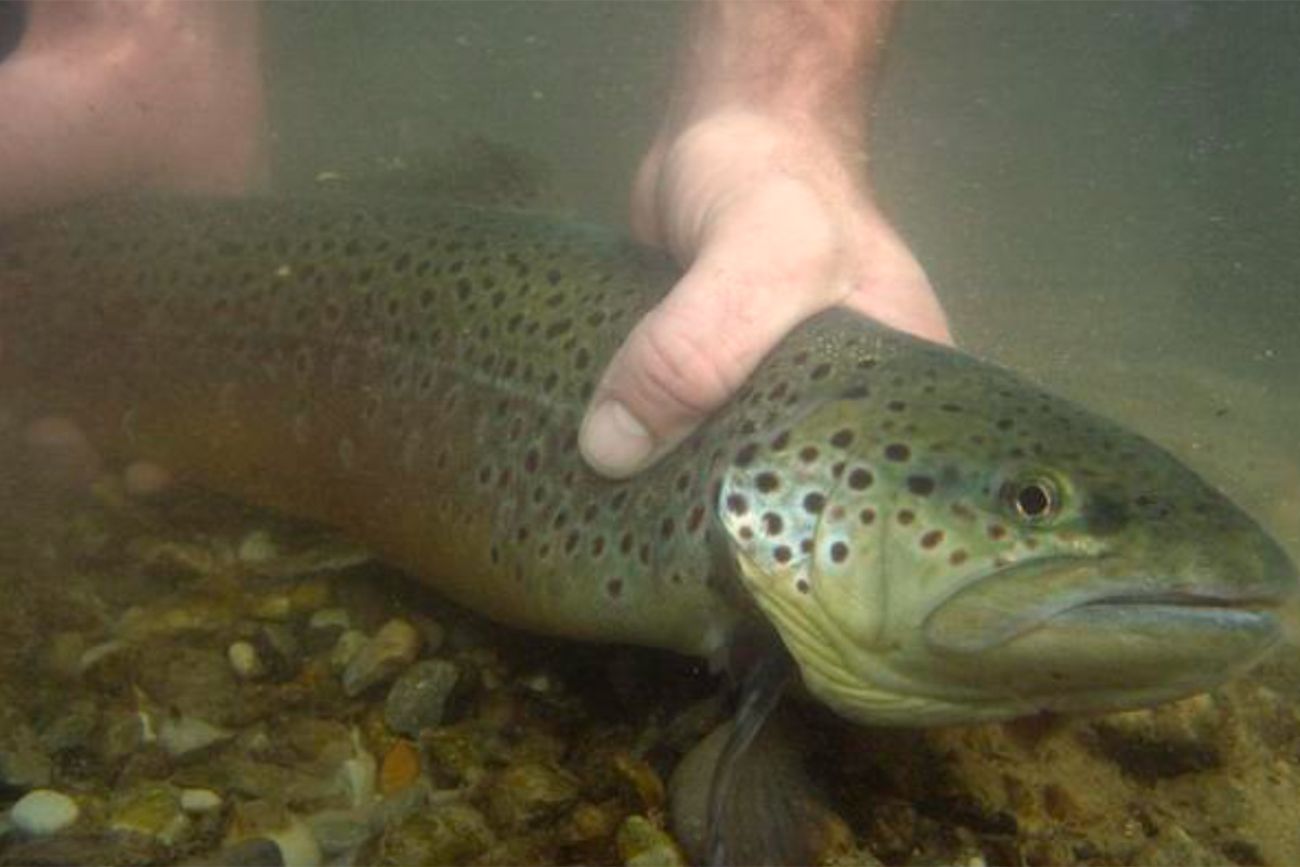Michigan updates fishing regulations for 2024 season. What you need to know

- The DNR has made changes to Michigan’s fishing regulations for the 2024 season
- In some streams, the state has combined the daily possession limit of lake trout and splake
- Fishing licenses can be purchased online or through the Michigan DNR hunt-and-fish app
April 24: Michigan fishers are warned about harmful algae ahead of trout season
Some Michigan fishers will be allowed to catch more trout this year while others may find themselves limited to just one. It all depends on the species, the size of the fish and where they’re caught.
The state’s newly released fishing regulations for the 2024 season, in effect from Monday through March 31, 2025, also include combined possession limits for lake trout and splake in certain waters and a licensing requirement for charter boat captains and inland fishing guides.
Updated regulations
Under the new regulations, people are limited to one rainbow trout a day — down from the previous limit of two — if it's larger than 20 inches in type 3 and 4 streams.
Related:
- Michigan boat owners are reminded to renew their watercraft registrations
- For Michigan farmers, danger is another part of the job
- Michigan shortens coyote hunting season, irking some hunters
- Michigan's black bear population is booming
The fish found in these streams are typically larger than those found in type 1 and 2 streams because they come from the Great Lakes to spawn. Fewer than 200 inland trout and salmon streams in Michigan are considered Type 3 or 4. The vast majority, about 1,400, are classified type 1 and 2.
“If fish have shown that they can grow to larger sizes, we just need to protect them more,” said Christian LeSage, fishery biologist for the Department of Natural Resources. “That's how we manage them, based on the type of fish that are in that stream.”
In another change, the state is now combining the daily possession limit for lake trout and splake in the Great Lakes and connecting waters because the two fish species are very similar. The combined limit ranges from two to five fish a day, with the limit for northern Lake Huron rising this year from two to three.
Michigan also now requires inland fishing guides to obtain an additional license that is valid for three years. Guides will also have to submit a report of what they catch to the DNR every month.
Opening dates
Those planning to go fishing this season should look out for important dates as opening day varies in different parts of the state.
- April 27: Trout (statewide); inland walleye and northern pike (Lower Peninsula)
- May 15: Walleye and northern pike (Upper Peninsula)
- June 1: Muskellunge possession on all Great Lakes, inland waters, the St. Marys River and the St. Clair and Detroit rivers. Catch-and-release fishing for muskellunge is open all year.
- May 25: The possession season for bass opens for most of the state.
- June 15: Possession season for bass In Lake St. Clair and the St. Clair and Detroit rivers. The catch-and-immediate-release season for largemouth and smallmouth bass is open all year on most waters.
How to get a fishing license
Michigan residents can purchase a fishing license online or on the Michigan DNR Hunt Fish app for $26. The fee is $11 for seniors age 65 and older. The license is good for a year. Non-residents can buy a license for $76.
Included in each license fee is a $1 surcharge that is used to educate residents about the importance of fishing and hunting in the state.
Michigan Environment Watch
Michigan Environment Watch examines how public policy, industry, and other factors interact with the state’s trove of natural resources.
- See full coverage
- Subscribe
- Share tips and questions with Bridge environment reporter Kelly House
Michigan Environment Watch is made possible by generous financial support from:
Our generous Environment Watch underwriters encourage Bridge Michigan readers to also support civic journalism by becoming Bridge members. Please consider joining today.
See what new members are saying about why they donated to Bridge Michigan:
- “In order for this information to be accurate and unbiased it must be underwritten by its readers, not by special interests.” - Larry S.
- “Not many other media sources report on the topics Bridge does.” - Susan B.
- “Your journalism is outstanding and rare these days.” - Mark S.
If you want to ensure the future of nonpartisan, nonprofit Michigan journalism, please become a member today. You, too, will be asked why you donated and maybe we'll feature your quote next time!






